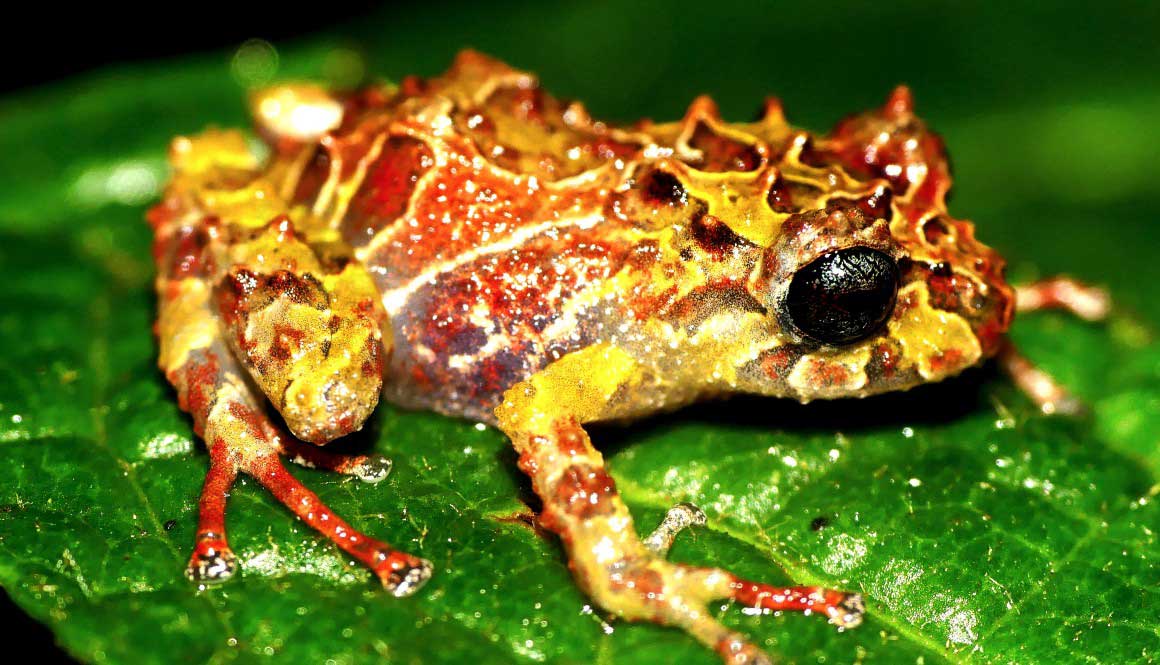A new species of frog was discovered in Ecuador and named in honor of Norma Ewing, a passionate conservationist and animal rescuer from the United States. The announcement was made on Thursday, May 30th, by the National Institute of Biodiversity (Inabio).
The discovery of Pristimantis normaewingae was made in the Cerro Candelaria private reserve, part of the Llanganates-Sangay corridor. This area is in an eastern Andean cloud forest system, characterized by a predominance of bromeliads on the ground and on the branches of trees and bushes.
The new species was found in an Andean habitat between 2,550 and 3,150 meters above sea level. This habitat is part of the Pastaza River valley, located on the eastern slope of the Andes. The region, situated between the Andes and the Amazon and flanked by the Llanganates and Sangay National Parks, comprises a wide gradient of altitude, climate, and ecosystems. For this reason, it is one of the most biodiverse and endemic places in Ecuador, as highlighted by Inabio.
Researchers and institutions such as Inabio, the Ecominga Foundation, the Oscar Efrén Reyes Foundation, La Sapada Herpetological Team, and The Youth Land Trust participated in the discovery.
This frog belongs to the Pristimantis anaiae group but is distinguished by having incomplete oval markings in the sacral region. Additionally, it has a row of enlarged dorsolateral tubercles and a light blue iris with a broad horizontal medial band of copper with black reticulations.
The other frogs in this group have different iris patterns, complete oval markings in the sacral region, and lack the dorsolateral row of enlarged tubercles. The exceptions are Pristimantis kunam and Pristimantis maryanneae, which have a larger and smaller dorsolateral row of enlarged tubercles, respectively.
Pristimantis species proved by genetics
The genetic analyses and processes related to extraction, sequencing, construction of phylogenetic trees, morphological description, and taxonomic comparison were carried out at the Nucleic Acid Sequencing Laboratory of the National Institute of Biodiversity (Inabio) in Quito and in Sumak Kawsay in Situ (SKIS), in the Pastaza rainforest.
Pristimantis is a species-rich frog genus in the northern Andes mountain range, and its known diversity has increased exponentially in the last decade. The number of endemic and threatened species of this genus in the tropical Andes of Ecuador is rapidly growing. Fourteen new species of this genus have been described in the upper Pastaza River basin since 2010, with most being endemic to the region.
Within the Llanganates-Sangay Corridor (CLS), different types of conservation areas have been created. The Cerro Candelaria Private Protected Area is one of the largest conservation efforts, protecting 2,696 hectares along a wide slope (from 1,500 to 3,840 meters above sea level), which includes ecosystems ranging from cloud forest to páramo.
This area has been the type locality for five new species of frogs to date, and some areas remain unexplored, with biodiversity yet to be discovered, noted Inabio.
In just ten years, Ecuador has gone from having about 300 described species of amphibians to almost 700.


0 Comments